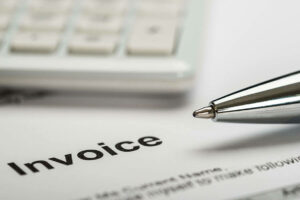
Because preferred shares are often compared with bonds and other debt instruments, let’s look at their similarities and differences. A nonperpetual preferred stock will have a stated buyback price and buyback date, usually 30 or more years from the date of issue. It also has a defined maturity date and therefore has more certainty regarding cash flows.
Other factors, such as our own proprietary website rules and whether a product is offered in your area or at your self-selected credit score range, can also impact how and where products appear on this site. While we strive to provide a wide range of offers, Bankrate does not include information about every financial or credit product or service. Similarly, holders of preferred stock may be able to take advantage of lower tax rates on qualified dividends, which may enjoy a 0, 15 or 20 percent rate, though not all preferreds are able to. Preferred stock is often referred to as a hybrid investment, because it offers characteristics of both a stock and a bond.
Cumulative preferred stocks provide provisions for the payment of dividends that have been missed out and make sure that all dividends of the company are paid to the cumulative preferred shareholders. Let’s say that a company experiences a steep decline in its noncumulative preferred stock stock value and as a result, opts to temporarily suspend dividend payments to reduce costs and improve cash flow. During that time, dividends continue to accumulate for cumulative preferred stock shares at a rate of 5%, based on a par value of $100 per share.
Preferred stocks often have no maturity date, but they can be redeemed or called by their issuer after a certain date. There is no minimum or maximum call date, but most companies will set the date five years out from the date of issuance. The offers that appear on this site are from companies that compensate us. But this compensation does not influence the information we publish, or the reviews that you see on this site. We do not include the universe of companies or financial offers that may be available to you. This means that if the issuing company decides not to pay a dividend for a specific period, the missed dividend is not carried forward or accumulated.
A company records a loss of $70,000 on the sale of its outdated inventory. Preferred shares usually do not carry voting rights, although under some agreements, these rights may revert to shareholders who have not received their dividend. Preference preferred stock is considered the next tier of stock in terms of prioritization. Though it falls behind prior preferred stock, preference preferred stock often has greater priority compared to other issuances of preferred stock. If there are multiple tiers of preference preferred stock, each issuance is usually given its rank (i.e., most senior, second senior, etc.). Given the dividend on the common stock and factors such as further appreciation potential, it may or may not make sense for the investor to convert the preferred to common stock.

It is also important to note that preferred stock takes precedence over common stock for receiving dividend payments. This means that a share of cumulative preferred stock must have all accumulated dividends from all prior years paid before any other lower-tier share can receive dividend payments. Preference shares, more commonly referred to as preferred stock, are shares of a company’s stock with dividends that are paid out to shareholders before common stock dividends are issued. If the company enters bankruptcy, preferred stockholders are entitled to be paid from company assets before common stockholders.
Investors should monitor these factors to assess the potential impact on their investment and make informed decisions. If a share of preferred stock has a par value of $100 and pays annual dividends of $5 per share, the dividend yield would be 5%. Because of their narrow focus, financial sector funds tend to be more volatile. Preferred Securities are subordinated to bonds and other debt instruments, and will be subject to greater credit risk.
By contrast, “cumulative” indicates a class of preferred stock that indeed entitles an investor to dividends that were missed. The total dividend for the preferred stockholders is $ while the value for the common stock holders will be $490000. Some types of preferred stock have a fixed end date in which, much like a bond, the original capital contributed is returned to shareholders.

ETFs trade like stocks, are subject to investment risk, fluctuate in market value and may trade at prices above or below the ETFs net asset value. Two different types of preferred stock have big implications for dividend investors. However, an individual investor looking into preferred stocks should carefully examine both their advantages and drawbacks. The starting point for research on a specific preferred is the stock’s prospectus, which you can often find online.

نشانی ایمیل شما منتشر نخواهد شد. بخشهای موردنیاز علامتگذاری شدهاند *